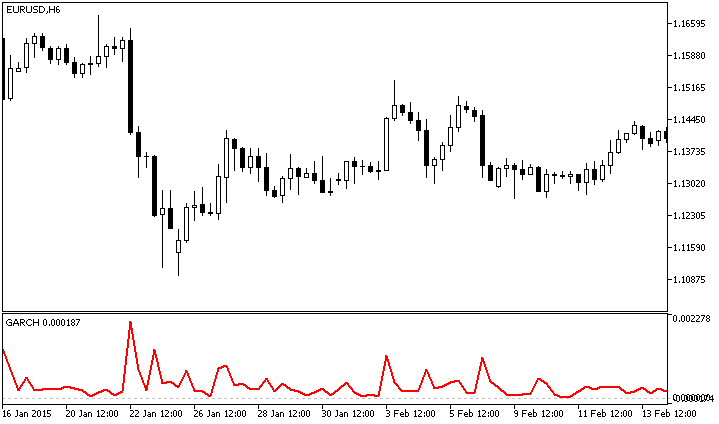
Also, businesses can better track and respond to trends through segmentation, which enables them to better care for the needs of their customers. Segment reporting has traditionally focused on financial metrics such as revenue and profitability. Determining what is material and what is not for each segment can be a challenging process.
However, estimating the market potential can be very challenging when a product or service is totally new to the market and no historical data on which to base forecasts exists. Customer segmentation relies on identifying key differentiators that divide customers into groups that can be targeted. Information such as a customer’s demographics, geography, psychographic and behavioral tendencies are taken into account when determining customer segmentation practices. Some business models distinguish between market segments with slightly different needs and problems.
- For example, a clothing company might report on its performance in men’s, women’s, and children’s apparel.
- Companies should establish precise data collection and analysis procedures and verify and validate the data to ensure its accuracy and reliability.
- For example, XYZ Corp.’s marketing division would not be considered a segment because it does not perform operations that directly earn revenue.
Traditionally two variables (often, but not necessarily, price and quality) are used to construct the map. A sample of people in the target market are asked to explain where they would place various brands in terms of the selected variables. Results are averaged across all respondents, and results are plotted on a graph, as illustrated in the figure.
What Is a Market Segmentation?
The cost of these parts of the business must somehow be shared with the revenue-generating portions of the business. Companies often allocate these costs to other parts of the business based on some formula, such as dividing the total costs by the number of divisions or segments, as percentage of total revenue, or as percentage of total square footage. A basic approach is to first assess the size of the broad population, then estimate the percentage likely to use the product or service, and finally to estimate the revenue potential. For example, customer groups can be narrowed down to who the customers are and what they do or expanded to include more precise segments — with each type having more granular factors. Geographic segmentation is relatively simple to manage, assuming the brand has the location and address information of potential customers.

Though market research might provide insights on what particular segments are most likely to believe or prefer, psychographic segmentation is best completed with information direct from the source. You can use survey questions with a qualitative focus to help draw out insights in the customers’ own voice. Companies tend to divide their organisation along product lines, geographic locations, or other management needs for decision-making and reporting.
The basics of segmentation in marketing
By understanding your market segments, you can leverage this targeting in product, sales, and marketing strategies. Market segments can power your product development cycles by informing how you create product offerings for different segments like men vs. women or high income vs. low income. A business segment is a part of a company that can be identified by the products it provides or by the services or geographical locations it operates in. In other words, it a single part of a business that can be distinctly separated from the company as a whole based on its customers, products, or market places. The standard requires companies to identify their operating segments based on how their management makes decisions about allocating resources and assessing performance. Companies must also disclose additional information about their operating segments if this information is necessary to understand the company’s performance or financial position.
BIO-TECHNE RELEASES FOURTH QUARTER FISCAL 2023 … – PR Newswire
BIO-TECHNE RELEASES FOURTH QUARTER FISCAL 2023 ….
Posted: Tue, 08 Aug 2023 10:30:00 GMT [source]
Management at Apple can divide the overall company performance into smaller segments based on these products to measure where the company is succeeding. Without this type of segmentation, you might thing Apple’s steady profits are from the iPad because its one of the newest products to be release. In fact, the Apple tablet segment’s sales have slowed down in recent quarters because consumer demand has decreased. Apple’s steady profits are still attributed to the continued success of its phone segment. Here is an illustration of a segment; Company ABC is into the production of telephones, mobile phones and other related gadgets for its customers and has a wide business coverage.
Customer segmentation FAQ
The final map indicates how the average member of the population views the brand that makes up a category and how each of the brands relates to other brands within the same category. While perceptual maps with two dimensions are common, multi-dimensional maps are also used. When a marketer enters more than one market, the segments are often labeled the primary target market and secondary target market. The primary market is the target market selected as the main focus of marketing activities.

Not only do companies strive to divide their customers into measurable segments according to their needs, behaviors or demographics, but they also aim to determine the profit potential of each segment by analyzing its revenue and cost impacts. Value-based segmentation evaluates groups of customers in terms of the revenue they generate and the costs of establishing and maintaining relationships with them. It also helps companies determine which segments are the most and least profitable so they can adjust their marketing budgets accordingly. As a brand finds success with particular market segments, it may discover new niches, based on combinations or variations of existing segments. These market niches help brands uncover new and unmet customer needs in the market.
Behavioral segmentation
Try Shopify for free, and explore all the tools and services you need to start, run, and grow your business. Segment reporting has evolved significantly, and several emerging trends will likely shape its future. Census data is a valuable source of cultural data but cannot meaningfully be applied to individuals. Name analysis (onomastics) is the most reliable and efficient means of describing the cultural origin of individuals.

It allows you to create messaging and offers that resonate with your audience, rather than guessing about their preferences and needs. Marketing and content teams will value having detailed information for each customer segment, as this allows them to personalize their campaigns and strategies at scale. This may lead to variations in messaging that they know will connect better with specific audiences, making their campaign results more effective.
It can help identify customer preferences and needs and tailor marketing and sales strategies accordingly. For example, a bank might report its performance serving retail customers, small businesses, and large corporations. If the product or service you’ve developed doesn’t solve a stated problem of your target audience or isn’t useful, then that product will have difficulty selling. When you know what each of your market segments cares about an/d how they live their lives, it’s easier to know what products will enrich or enhance their day-to-day activities. If you have your entire market separated into different customer segments, then you have defined them by set criteria, like demographics, needs, priorities, common interests, or behavioral preferences.
A brand is able to measure the amount of revenue generated by the market segment. Without the ability to quantify the success of selling into a market segment, it’s hard to make decisions about future investments in that segment. Demographic segmentation is relatively simple to manage, assuming the brand has the necessary demographic information of potential customers. A brand can select relevant targeting criteria to reach users who fit the criteria of that market segment. A credit card company, for example, needs a large base of credit card holders and a large base of merchants who accept those credit cards.
Read on to understand why segmentation is important for growth and the types of market segmentation to use to maximize the benefits for your business. There are no formulas for evaluating the attractiveness of market segments and a good deal of judgment must be exercised.[83] There are approaches to assist in evaluating market segments for overall attractiveness. Generational segmentation assumes that people’s values and attitudes are shaped by the key events that occurred during their lives and that these attitudes translate into product and brand preferences.
Customer segmentation focuses on existing customers, while market segmentation focuses on target markets, including prospective customers. Additionally, segment reporting enhances accountability and transparency, enabling stakeholders to make informed investment decisions based on accurate and relevant information. Therefore, businesses must adhere to the segment reporting standards and guidelines set by accounting regulatory bodies to ensure accurate and transparent financial reporting. Companies should provide detailed disclosures about their segments in their financial statements. It includes information about the products and services contained in each segment, the revenue and profitability, and the assets and liabilities of each segment.
Harmonization of Reporting Standards
It could include using algorithms to identify patterns and trends in data and using data visualization tools to make it easier for investors to understand and interpret the data. GAAP also requires segment reporting for companies operating in multiple segments, providing specific guidance on identifying and reporting segments. Segment reporting promotes accountability by requiring companies to report on the performance of each segment. It helps ensure that company management is held accountable for the performance of each business unit and that they are making strategic decisions that benefit the company as a whole. As you go through the process, you may realize that segmenting based on behaviors doesn’t give you actionable segments, but behavioral segmentation does. You’ll want to iterate on your findings to ensure you’ve found the best fit for the needs of your marketing, sales and product organizations.
- Apple Inc. is well-known for manufacturing phones, tablets, computers, music players, and many other items.
- It considers how people spend their leisure,[58] and which external influences they are most responsive to and influenced by.
- Psychographic segmentation is more complex to manage, because it requires that brands acquire the necessary psychographic data from potential customers.
- Market segmentation is helpful because it enables learning, decision-making and action to take place at the subgrouping level.
- On the other hand, it also needs advertisers to finance production and distribution.
Under Medical Devices, the company reports the performance of surgical equipment, orthopedic devices, and other medical devices. Transactions between different company segments can be complex to report, mainly if transfer prices are involved. It can make it challenging to accurately reflect each segment’s financial performance and may require additional what is a business segment disclosures to provide context. Certain expenses, such as research and development or marketing, may be shared across multiple segments. In these cases, the costs must be allocated to the appropriate segments based on a reasonable and consistent method. Companies with multiple business units or subsidiaries may report on the performance of each unit.
For example, in the health industry, planners often segment broad markets according to ‘health consciousness’ and identify low, moderate, and highly health-conscious segments. This is an applied example of behavioural segmentation, using attitude to a product or service as a key descriptor or variable which has been customized for the specific application. The use of multiple segmentation variables normally requires the analysis of databases using sophisticated statistical techniques such as cluster analysis or principal components analysis. For this reason, many companies purchase data from commercial market research firms, many of whom develop proprietary software to interrogate the data.